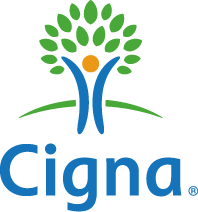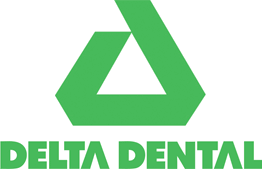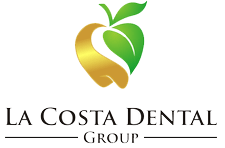#1 Encinitas, CA Orthodontist
Top-Rated Orthodontist in Encinitas

A straight smile may make a huge difference! A stunning smile can boost your self-confidence and lead to new social and professional opportunities. You’ll be relieved to learn that orthodontic treatment is the original smile-improvement tool, and you’re never too old to benefit from it. It’s not all about appearances, though: It’s simpler to bite, chew, and even speak when your teeth are properly aligned. They’re also easier to maintain clean, which helps to keep tooth decay and gum disease at bay.
Early Orthodontics for Children
Building a healthy smile that children can feel good about involves looking at bite alignment and the development of baby teeth versus adult teeth. In determining which treatments will help your child grow into a well-aligned smile, our Encinitas, CA, orthodontist makes sure that permanent teeth have enough room to develop, without crowding or causing other complications.
Our main goals in early orthodontic treatment for children are creating room for severely crowded permanent teeth, creating facial symmetry by influencing jaw growth, and reducing the risk of trauma to protruding front teeth. The advantages of early treatment, for many patients, can include preventing tooth extractions or jaw surgery and decreasing treatment time with braces. After your child’s permanent dentition has moved into place, they can receive full treatment to help fine tune and straighten alignment of teeth and bite.
Orthodontic Treatment Options: Clear and Metal Braces
La Costa Dental offers orthodontic treatment for children, teens, and adults to help them achieve straight teeth and a comfortable bite. While some believe that orthodontic correction is all about making your smile look nicer, our Encinitas braces also promote better hygiene – as straight teeth are easier to brush and floss – and helps prevent uncomfortable issues that develop when jaw arches are not properly aligned.
We provide orthodontic treatment that includes:
Silver Braces – Metal orthodontics are a rite of passage for many young patients and are often the most conservative and predictable way to correct a range of issues, from severely misaligned teeth to re-aligning bite. Children often prefer metal braces, as they get to select fun colors for bands and many of their peers have the same appliances.
Clear Braces – For older patients who are in need of orthodontic care, but who are looking for a more low-profile treatment, La Costa Dental offers tooth-colored braces. These appliances include clear brackets and wires, so you can still benefit from full orthodontics, but can skip the obvious appearance of metal orthodontia.
Invisalign® – This alternative to bracket and wire braces systems is ideal for adult or teen patients who are looking for the most discreet and convenient treatment possible. Invisalign® utilizes a series of clear plastic aligners that are molded to the shape of your teeth. The aligners pop over your smile and help move your teeth into desired position. Invisalign® aligners are removable so you can more easily take care of your smile and enjoy your favorite foods.
TMJ Treatment with Braces and Splints – Misalignment of jaw arches creates painful side-effects, such as headaches, clicking and popping of jaw joints, ringing in ears, or teeth grinding. With braces and special splints, however, our Encinitas orthodontic office can help re-align your bite and alleviate discomfort associated with temporomandibular joint disorder.
Learn More about Orthodontics – Contact La Costa Dental
To learn more about getting clear or metal braces in Encinitas, CA, contact our office today.
Clear Aligners & Braces in Encinitas - Invisalign Provider Near Me - Affordable Orthodontics in Encinitas, CA
In much the same way as doctors choose to specialize in areas such as cardiology and neurology, dentists can also choose to specialize. Orthodontics is a dental specialty which aims to prevent, diagnose and treat facial and dental irregularities, such as malocclusions (bad bites). Many orthodontic practices are limited to dentofacial orthopedics and general orthodontics but can successfully treat patients of any age.
Orthodontists are fully qualified dentists who embark on a further three years of university-based study and gain extensive clinical experience in an orthodontic residency program. The American Association of Orthodontists (AAO) is the regulating body for this branch of dentistry. Selecting an orthodontist who is a member of this organization adds the assurance that treatment is being administered by an individual with specialty education in oral biology and biomechanics. The AAO recommends that children should first be examined by the orthodontist around the age of seven, to ensure that jaw and tooth irregularities are not beginning to form.
What does an orthodontist do?
Orthodontists are experts in correcting misalignments of the teeth and jaw. There are many debilitating problems associated with misalignment, for example, speech defects, difficulties chewing and difficulty maintaining adequate oral hygiene.
Here is a brief overview of some of the most common issues an orthodontist can successfully treat:
- Anteroposterior deviations – Common examples of anteroposterior deviations include underbite (the lower teeth are positioned further forward than upper teeth) and overbite (the upper teeth are positioned further forward than the lower teeth). Both of these deviations can cause difficulty articulating and chewing.
- Overcrowding – Overcrowding is one of the most common problems orthodontists treat. On occasion, lack of jawbone space means adult teeth cannot erupt in alignment with existing teeth. The orthodontist is able to realign the teeth using a number of unobtrusive devices and treatments.
- Aesthetic issues – In some cases, the shape of the whole face is negatively impacted by malocclusions or a bad bite. The orthodontist can restructure and realign the jaw, lips and teeth to create a beautiful, even smile.
How does an orthodontist realign jaws and teeth?
Initially, the orthodontist conducts a thorough examination of the jaw and teeth. Panoramic X-rays and study models (bite impressions) will be taken prior to the orthodontist making treatment recommendations. The orthodontist will recommend the best treatment plan for the patient’s particular condition.
Here is a brief overview of some of the treatments orthodontists may use:
- Dental braces – The combination of brackets (which are affixed to each individual tooth), and an archwire (which connects each bracket) are commonly placed to gently train the teeth into proper alignment. Dental braces can be made of metal, ceramics or clear (“invisible”) materials.
- Headgear and facemasks – These devices are generally used to correct a developmental problem, such as an overbite or an underbite. In addition to the dental braces, the orthodontist will design the headgear and/or facemask which fit around the head and attaches to the braces. This structure will further encourage the teeth and jawbone into alignment.
- Retainers – After the orthodontist has realigned the teeth using dental braces, removable devices or a headgear, a retainer may then be provided to ensure that the teeth do not begin to move back toward their original positions. Retainers are generally worn until the underlying bone has reformed into the correct position.
If you have any questions about orthodontists and the treatments they provide, please contact our office.
A malocclusion is an incorrect relationship between the maxilla (upper arch) and the mandible (lower arch), or a general misalignment of the teeth. Malocclusions are so common that most individuals experience one, to some degree. The poor alignment of the teeth is thought to be a result of genetic factors combined with poor oral habits, or other factors in the early years.
Moderate malocclusion commonly requires treatment by an orthodontist. Orthodontists are dentists who specialize in the treatment of malocclusions and other facial irregularities.
The following are three main classifications of malocclusion:
- Class I – The occlusion is typical, but there are spacing or overcrowding problems with the other teeth.
- Class II – The malocclusion is an overbite (the upper teeth are positioned further forward than the lower teeth). This can be caused by the protrusion of anterior teeth or the overlapping of the central teeth by the lateral teeth.
- Class III – Prognathism (also known as “underbite”) is a malocclusion caused by the lower teeth being positioned further forward than the upper teeth. An underbite usually occurs when the jawbone is large or the maxillary bone is short.
Reasons for treating a malocclusion
A severe malocclusion may lead to skeletal disharmony of the lower face. In a more extreme case, the orthodontist may work in combination with a maxillofacial dentist to reconstruct the jaw. It is never too late to seek treatment for a malocclusion. Children and adults alike have completed orthodontic realignment procedures and have been delighted with the resulting even, straight smile.
Here are some of the main reasons to seek orthodontic treatment for a malocclusion:
- Reduced risk of tooth decay – A malocclusion often causes an uneven wear pattern on the teeth. The constant wearing of the same teeth can lead to tooth erosion and decay.
- Better oral hygiene – A malocclusion can be caused by overcrowding. When too many teeth are competing for too little space, it can be difficult to clean the teeth and gums effectively. It is much easier to clean straight teeth that are properly aligned.
- Reduced risk of TMJ – Temporomandibular jaw syndrome (TMJ) is thought to be caused by a malocclusion. Headaches, facial pains and grinding teeth during sleep all result from the excessive pressure to the temporomandibular joint. Realigning the teeth reduces pressure, and eliminates these symptoms.
How is a malocclusion treated?
A malocclusion is usually treated with dental braces. The orthodontist takes panoramic X-rays, conducts visual examinations, and takes bite impressions of the whole mouth before deciding on the best course of treatment. If a malocclusion is obviously caused by overcrowding, the orthodontist may decide an extraction is the only way to create enough space for the realignment. However, in the case of an underbite, crossbite or overbite, there are several different orthodontic appliances available, such as:
- Fixed multibracket braces – This type of dental braces consists of brackets cemented to each tooth, and an archwire that connects each one. The orthodontist adjusts or changes the wire on a regular basis to train the teeth into proper alignment.
- Removable devices – There are many non-fixed dental braces available to treat a malocclusion. Retainers, headgear and palate expanders are amongst the most common. Retainers are generally used to hold the teeth in the correct position while the jawbone grows properly around them.
- Invisalign® – These dental aligners are removable and invisible to the naked eye. Invisalign® works similarly to fixed dental braces but does not impact the aesthetics of the smile.
If you have any questions about malocclusions, please contact our office.
Orthodontics is a specialized branch of dentistry that is concerned with diagnosing, treating and preventing malocclusions (bad bites) and other irregularities in the jaw region and face. Orthodontists are specially trained to correct these problems and to restore health, functionality and a beautiful aesthetic appearance to the smile. Though orthodontics was originally aimed at treating children and teenagers, almost one third of orthodontic patients are now adults. A person of any age can be successfully treated by an orthodontist.
A malocclusion (improper bite) can affect anyone at any age, and can significantly impact the individual’s clarity of speech, chewing ability and facial symmetry. In addition, a severe malocclusion can also contribute to several serious dental and physical conditions such as digestive difficulties, TMJ, periodontal disease and severe tooth decay. It is important to seek orthodontic treatment early to avoid expensive restorative procedures in the future.
What problems can orthodontics treat?
Orthodontics can treat a wide range of dental problems and in most cases, completely realign the teeth. Orthodontists may work alone, or in combination with a maxillofacial surgeon.
The typical irregularities requiring orthodontic treatment are as follows:
- Overcrowding – An overcrowded mouth means there is insufficient space within the jaw for all of the adult teeth to fit naturally. Overcrowding may lead to displaced, rotated or completely misaligned teeth.
- Overbite – An overbite refers to the protrusion of the maxilla (upper jaw) relative to the mandible (lower jaw). An overbite gives the smile a “toothy” appearance and the chin looks like it has receded.
- Underbite – An underbite, also known as a negative underjet, refers to the protrusion of the mandible (lower jaw) in relation to the maxilla (upper jaw). An underbite makes the chin look overly prominent. Developmental delays and genetic factors generally cause underbites and overbites.
How can orthodontics help?
Orthodontic dentistry offers techniques which will realign the teeth and revitalize the smile. There are several treatments the orthodontist may use, depending on the results of panoramic X-rays, study models (bite impressions), and a thorough visual examination.
Fixed dental braces can be used to expediently correct even the most severe case of misalignment. These braces consist of metal or ceramic brackets which are affixed to each tooth and an archwire which is used to gradually move the teeth through the duration of the treatment.
Removable appliances include headgear (which consists of a metal wire device attached to customized braces), retainers, Invisalign® aligners (which are almost invisible to the naked eye), palate expanders and tooth movers. Faceguards are generally used to correct developmental delays in both the upper and lower jaw, and palate expanders are used to combat overcrowding.
Whatever the dental irregularity or the age of the individual, orthodontic appliances can properly realign the teeth and create a beautiful smile.
If you have any questions or concerns about orthodontic treatments or how they can benefit you, please contact our office.
The benefits of orthodontic treatment often go beyond the obvious physical changes of an improved bite and straighter teeth; it’s also a great way to improve a person’s overall self-image. While having beautiful straight teeth is important, even more important is the need to alleviate any potential health problems associated with the teeth or jaw. Crooked teeth or jaw problems may contribute to improper cleaning of teeth, leading to tooth decay and, possibly, gum disease or total tooth loss. Orthodontic problems that go untreated can lead to chewing and digestion difficulties, speech impairments, and abnormal wear of tooth surfaces. Over time, excessive strain on gum tissue and the bone that supports the teeth can affect the jaw joints leading to problems such as headaches or face and neck pain.
The American Association of Orthodontics recommends that children get an orthodontic evaluation no later than age 7. Though orthodontic treatment can be done at any age, timely treatment ensures maximum dental health.
With all of the recent advancements in orthodontics, wearing braces has never been easier. State-of-the-art appliances and treatments are now available, from traditional metal braces, to clear and tooth colored brackets, to NASA type wires that are heat activated and require fewer adjustments! Some patients may even be candidates for treatment with Invisalign, a revolutionary way to straighten teeth using clear, retainer type aligners that require no braces or wires!
If treatment is necessary, we will thoroughly discuss which treatment option is best suited for you!
Reasons for orthodontic treatment (braces) adults & children:
- Breathing or swallowing problems – Mouth breathing can lead to snoring and sleep apnea.
- Crossbite – One or more upper teeth bite inside the lower teeth (towards the tongue).
- Crowding – Involving extra teeth or malpositioned teeth.
- Deep Overbite – The lower front teeth bite into the upper tissue of the upper teeth.
- Disfiguring of the face & mouth – Affects the development of the jaw and position of the teeth.
- Jaw & jaw joint pain
- Missing or extra teeth – Due to tooth decay, injuries, or inherited problems.
- Overjet (protruding upper teeth) – Upper teeth that protrude beyond normal and are usually associated with a short lower jaw.
- Self-image – An attractive smile can boost a person’s self-image and confidence.
- Spacing between teeth – Teeth are missing or may be too small or too large.
- Speech, chewing or biting problems
- Underbite (lower jaw protrusion) – Lower jaw is longer than the upper jaw.
Specific to children:
- Finger or thumb sucking – These habits can cause protrusion of the upper incisor teeth, and mouth breathing.
- Teeth erupting out of position – Can be guided to proper alignment.
What does orthodontic treatment involve?
Orthodontic treatment involves three phases:
1. Planning Phase – Your first couple of visits may include the following:
A medical and dental history evaluation.
- Castings or “molds” of your teeth.
- Computer generated photograph of the head and neck that will aid in planning.
- Photographs of your face and mouth.
- X-rays of the teeth and jaws.
After careful planning, your orthodontist will design and apply braces or fabricate custom-made appliances for you.
2. Active Phase – Active treatment involves visiting your orthodontist on a regular basis for adjustments and following specific treatment requirements to ensure successful treatment.
3. Retention Phase – When treatment is completed, the braces and/or appliances are removed and a new appliance is made. Usually these retainers are removable and will maintain the changes made to your teeth if worn continuously until the teeth and bone are stabilized in their new positions.
Treatment and retention times vary depending on each individual case. Your orthodontist will ensure you have a successful treatment for a beautiful smile that can last a lifetime.
Orthodontics can not only help straighten your teeth, giving you an appealing smile, but can greatly contribute to the health of your jaw, teeth and sometimes your overall health.
Orthodontic treatment is highly predictable and immensely successful. Depending on the severity of the malocclusion (bad bite) or irregularity, orthodontic treatments may occur in either two or three distinct phases.
The benefits of correcting misaligned teeth are many. Straight teeth are pleasing to look at and greatly boost confidence and self esteem. More importantly, properly aligned teeth enhance the biting, chewing and speaking functions of the jaw. There are several types of irregularities, including:
- Overbite – The upper teeth protrude further than or completely cover the lower teeth.
- Underbite – The lower teeth protrude further than the upper teeth causing the chin to look prominent.
- Crossbite – Some of the upper teeth may close inside the lower teeth rather than on the outside.
- Overcrowding – Insufficient room on the arch causes some adult teeth to erupt incorrectly and become rotated.
The Phases of Orthodontic Treatment
Generally, orthodontic treatment takes between six and thirty months to complete. The treatment time will largely depend on the classification of the malocclusion, the type of dental devices used to correct it and the perseverance of the patient.
Here is a general overview of the three major stages of treatment:
Phase 1 – The Planning Stage
The orthodontist makes an exact diagnosis in order to realign the teeth in the most effective and expedient way. The first several visits may comprise of some of the following evaluations:
- Medical and dental evaluations – Dental and physical problems tend to go hand in hand. Problems in the oral cavity can lead to (or be caused by) medical problems. The goal of this evaluation is to ensure that prior medical and dental issues are completely under control before treatment begins.
- Study model (castings/bite impressions) – The patient is asked to bite down into a dental tray filled with a gel substance that hardens around the teeth. The trays are removed from the teeth and filled with plaster to create models of the patient’s teeth. Study models enable the orthodontist to scrutinize the position of each tooth, and how it relates to the other teeth.
- Panoramic X-rays – X-rays are fantastic tools for viewing potential complications or pre-existing damage to the jaw joint. X-rays also allow the orthodontist to see the exact position of each tooth and its corresponding root(s).
- Computer generated images – Such images allow the orthodontist to treatment plan and examine how specific treatments may affect the shape of the face and symmetry of the jaw.
- Photographs – Many orthodontists like to take “before, during and after” photographs of the face and teeth to assess how treatment is progressing, and the impact the treatment is having on the patient’s face shape.
Phase 2 – The Active Phase
All of the above diagnostic tools will be used to diagnosis and develop a customized treatment plan for the patient. Next, the orthodontist will recommend custom orthodontic device(s) to gently move the teeth into proper alignment. This orthodontic appliance may be fixed or removable. Most commonly, traditional fixed braces are affixed, which utilizes individual dental brackets connected by an archwire. Lingual braces are also fixed, but fit on the inside (tongue side) of the teeth to make them less visible.
Removable devices are an alternative to fixed braces. Examples of removable devices include the Invisalign system, headgear and facemask. These devices are designed to be worn for a specified amount of hours each day to expedite treatment.
Whatever the orthodontic device, the orthodontist will regularly adjust it to ensure adequate and continual pressure is being applied to the teeth. It is essential to visit the orthodontist at the designated intervals and to call if part of the device breaks or becomes damaged.
Phase 3: The Retention Phase
When the teeth have been correctly aligned, fixed braces and removable devices will be removed and discontinued. The most cumbersome part of the orthodontic treatment is now over. The orthodontist will next create a custom retainer. The goal of the retainer is to ensure that the teeth do not begin to shift back to their original positions. Retainers need to be worn for a specified amount of time per day for a specified time period. During the retention phase, the jawbone will reform around the realigned teeth to fully stabilize them in the correct alignment.
If you have any questions about orthodontic treatments, please contact our office.
Many children are ambivalent about getting braces. On one hand, they like the idea of perfect teeth, but on the other hand, they are nervous about whether the braces will cause pain and discomfort. The good news is that the placement of orthodontic braces is not at all painful, and the end result will be a beautiful straight smile.
Although patients of any age can benefit from orthodontic braces, they tend to work much quicker on pre-teens and teenagers since they are still experiencing jaw growth. The American Association of Orthodontists (AAO) recommends that children should first see an orthodontist around the age of seven years-old. An orthodontic examination may be beneficial before age seven if facial or oral irregularities are noted.
What Causes misalignment of teeth?
Poorly aligned teeth often cause problems speaking, biting and chewing. Most irregularities are genetic or occur as a result of developmental issues. Conversely, some irregularities are acquired or greatly exacerbated by certain habits and behaviors such as:
- Mouth breathing
- Thumb or finger sucking
- Prolonged pacifier use
- Poor oral hygiene
- Poor nutrition
What’s involved when a child gets braces?
The orthodontist initially conducts a visual examination of the child’s teeth. This will be accompanied by panoramic X-rays, study models (bite impressions), and computer generated images of the head and neck. These preliminary assessments are sometimes known as the “planning phase” because they aid the orthodontist in making a diagnosis and planning the most effective treatment.
In many cases, the orthodontist will recommend “fixed” orthodontic braces for a child. Fixed braces cannot be lost, forgotten or removed at will, which means that treatment is completed more quickly. Removable appliances may also be utilized, which are less intrusive and are generally used to treat various types of defects.
Here is a brief overview of some of the main types of orthodontic appliances used on children:
- Fixed braces – Braces are comprised of brackets that are affixed to each individual tooth and an archwire that connects the brackets. The brackets are usually made of metal, ceramic, or a clear synthetic material which is less noticeable to the naked eye. After braces have been applied, the child will have regular appointments to have the braces adjusted by the orthodontist. Orthodontic elastic bands are often added to the braces to aid in the movement of specific teeth.
- Headgear – This type of appliance is most useful to treat developmental irregularities. A headgear is a custom-made appliance attached to wire that aids in tooth movement. A headgear is intended to be worn for 12-20 hours each day and must be worn as recommended to achieve the intended result.
- Retainers – Retainers are typically utilized in the third phase (retention phase). When the original malocclusion has been treated with braces, it is essential that the teeth do not regress back to the original misalignment. Wearing a retainer ensures that teeth maintain their proper alignment and gives the jawbone around the teeth a chance to stabilize.
If you have questions about braces for children, please contact our office.
Orthodontic braces were historically associated with teenagers. Today, an increasing number of adults are choosing to wear braces to straighten their teeth and correct malocclusions (bad bites). In fact, it is now estimated that almost one third of all current orthodontic patients are adults.
Orthodontic braces are predictable, versatile, and incredibly successful at realigning the teeth. Braces work in the same way regardless of the age of the patient, but the treatment time is greatly reduced in patients who are still experiencing jaw growth and have not been affected by gum disease. In short, an adult can experience the same beautiful end results as a teenager, but treatment often takes longer.
Can adults benefit from orthodontic braces?
Absolutely! Crooked or misaligned teeth look unsightly, which can cause a low self-esteem and a lack of self confidence. Aside from poor aesthetics, improperly aligned teeth can also cause difficulties biting, chewing, and articulating clearly. Generally speaking, orthodontists agree that straight teeth tend to be healthier teeth.
Straight teeth offer a multitude of health and dental benefits including:
- Reduction in general tooth decay
- Decreased likelihood of developing periodontal disease
- Decreased likelihood of tooth injury
- Reduction in digestive disorders
Fortunately, orthodontic braces have been adapted and modified to make them more convenient for adults. There are now a wide range of fixed and removable orthodontic devices available, depending on the precise classification of the malocclusion.
The most common types of malocclusion are underbite (lower teeth protrude further than upper teeth), overbite (upper teeth protrude further than lower teeth), and overcrowding where there is insufficient space on the arches to accommodate the full complement of adult teeth.
Prior to recommending specific orthodontic treatment, the orthodontist will recommend treatment of any pre-existing dental conditions such as gum disease, excess plaque, and tooth decay. Orthodontic braces can greatly exacerbate any or all of these conditions.
What are the main types of orthodontic braces?
The following are some of the most popular orthodontic braces:
Traditional braces – These braces are strong and tend not to stain the teeth. They are comprised of individual brackets which are cemented to each tooth and accompanied by an archwire which constantly asserts gentle pressure on the teeth. Traditional braces are generally metal but are also available in a clear synthetic material and “tooth colored” ceramic. The ceramic brackets are usually more comfortable than the metal alternative, but can become discolored by coffee, wine, smoking, and certain foods.
Invisalign® – Invisalign® aligners are clear trays and should be worn for the recommended amount of time each day for the quickest results. Invisalign® aligners are clear trays, and should be worn for the recommended amount of time each day for the quickest results. Invisalign® aligners are more comfortable and less obtrusive than traditional braces but also tend to be more costly. Not all patients are candidates for Invisalign®.
Lingual braces – These appliances are usually metal and fixed on the tongue side of the teeth, therefore cannot be seen when a patient smiles. Lingual braces tend to be moderately expensive and can interfere with normal speech.
If you have any questions about orthodontic braces, please contact our office.
When braces are finally removed, the “retention” phase begins for most individuals. The objective of this phase is to ensure the teeth do not regress back to their previous position. A retainer will be used to maintain the improved position of the teeth. A retainer is a fixed or removable dental appliance which has been custom-made by the orthodontist to fit the teeth. Retainers are generally made from transparent plastic and thin wires to optimize the comfort of the patient.
Retainers are worn for varying amounts of time, depending on the type of orthodontic treatment and the age of the patient. Perseverance and commitment are required to make this final stage of treatment successful. If the retainer is not worn as directed, treatment can fail or take much longer than anticipated.
What types of retainer are available?
There are a variety of retainers available, each one geared towards treating a different kind of dental problem. The orthodontist will make a retainer recommendation depending on the nature of the original diagnosis and the orthodontic treatment plan.
The following are some of the most common types of retainers:
- Hawley retainer – The Hawley retainer consists of a metal wire on an acrylic arch. The metal wire may be periodically adjusted by the orthodontist to ensure the teeth stay in the desired position. The acrylic arch is designed to fit comfortably on the lingual walls or palate of the mouth.
Essix – The Essix retainer is the most commonly used vacuum formed retainer (VFR). A mold is initially made of the teeth in their new alignment, and then clear PVC trays are created to fit over the arch in its entirety. VFR’s are much cheaper than many other types of retainers and also do not affect the aesthetic appearance of the smile in the same way as the Hawley retainer. The disadvantage of VFR’s is that they break and scratch more easily than other types of retainers.
Fixed retainers – A fixed retainer is somewhat similar to a lingual brace in that it is affixed to the tongue side of a few teeth. Usually, a fixed retainer is used in cases where there has been either rapid or substantial movement of the teeth. It usually consists of a single wire. The inclination of the teeth to move rapidly means they are also more likely to regress back to their previous position if a fixed retainer is not placed.
What do I need to consider when using a retainer?
There are a few basic things to consider for proper use and maintenance of your retainer.
Don’t lose the appliance – Removable retainers are very easy to lose. It is advisable to place your retainer in the case it came in while eating, drinking, and brushing. Leaving a retainer folded in a napkin at a restaurant or in a public restroom can be very costly if lost because a replacement must be created. A brightly colored case serves as a great reminder.
Don’t drink while wearing a retainer – It is tempting to drink while wearing a retainer because of the unobtrusive nature of the device. However, excess liquid trapped under the trays can vastly intensify acid exposure to teeth, increasing the probability of tooth decay.
Don’t eat while wearing a retainer – It can be difficult and awkward to eat while wearing a removable retainer and it can also damage the device. Food can get trapped around a Hawley retainer wire or underneath the palate, causing bad breath. When worn on the upper and lower arches simultaneously, VFR retainers do not allow the teeth to meet. This means that chewing is almost impossible.
Clean the retainer properly – Removable retainers can become breeding grounds for calculus and bacteria. It is essential to clean the inside and outside thoroughly as often as possible. Hawley retainers can be cleaned with a toothbrush. Because harsh bristles can damage the PVC surface of a VFR, denture cleaner or a specialized retainer cleaner is recommended for this type of device.
Wear the retainer as directed – This phase of treatment is critical. The hard work has been done; the braces are off, and now it is tempting not to wear the retainer as often as the orthodontist recommends. Retainers are needed to give the muscles, tissues, and bones time to stabilize the teeth in their new alignment. Failure to wear the retainer as directed can have regrettable consequences, such as teeth returning to their original position, added expense, and lost time.
If you have any questions or concerns about retainers, please contact our office.
One of the primary concerns people often have about dental braces is the aesthetic impact of the metalwork on their smile. Especially for adults, the prospect of wearing unattractive metal braces for long periods of time can be very discouraging. Invisalign® offers an almost invisible aligning system that straightens teeth fast and contains no metal.
Invisalign® treatment consists of a series of custom-made aligning trays. The dentist changes the trays every several weeks to fit the new tooth configuration. In addition to the reduced visual impact, Invisalign® aligning trays can be temporarily removed for important occasions – meaning that treatment duration is patient-controlled. A great number of people report complete satisfaction with both the Invisalign® treatment and the stunning results.
What kind of bite problems can Invisalign® correct?
Invisalign® corrects the same dental problems as traditional metal braces; the only difference is that Invisalign® trays are almost invisible to the naked eye, and can be removed at will.
Here are some problems that are commonly corrected with Invisalign®:
- Overcrowding – This occurs when there is too little space for the teeth to align normally in the mouth. Overcrowding can cause tooth decay and increase the likelihood of gum disease.
- Large gaps between teeth – This can sometimes occur because teeth are missing or because the jaw continues to grow abnormally.
- Crossbite – This common dental problem occurs when one or multiple upper teeth bite inside the lower teeth. As a consequence, uneven wear can lead to bone erosion and gum disease.
- Overbite – This problem occurs when the upper teeth project further than, or completely cover, the lower teeth. Eventually, jaw pain and TMJ may occur.
- Underbite – This is the inverse of the overbite; the lower teeth project further than, or completely cover, the upper teeth. Eventually, jaw pain and TMJ can occur.
What advantages does Invisalign® offer over traditional braces and veneers?
Traditional dental braces, Invisalign® aligning trays, and dental veneers are three different ways to perfect the alignment of the teeth. There are many different considerations to make when deciding which treatment will be best, and each of these options works better in certain situations.
Invisalign® differs from traditional braces in that the aligning trays are fully removable. This means that more discipline and commitment is required from the patient. This is not usually a problem since the trays are comfortable and nearly invisible. Almost identical results can be obtained by using either treatment.
Invisalign® is preferable to veneers in many cases because unlike veneers, Invisalign® actually straightens the teeth. Veneers are thin covers that the dentist permanently affixes to the teeth. Teeth must be etched beforehand, meaning that to remove dental veneers, an alternative covering must be constructed. In addition to being somewhat expensive, veneers can break and often last for less than 20 years.
What does Invisalign® treatment involve?
First, the dentist needs to devise an initial treatment plan before creating the special aligning trays. Three-dimensional digital images are taken of the entire jaw. These images allow the dentist to move specific teeth on the screen, view the jaw from different angles, and also foresee what the face might look like in years to come. In essence, this technology can show how Invisalign® trays will change the facial aesthetics.
Once planning is complete, a unique set of aligners is made. The total amount of aligners required varies with each individual case, but 20-29 sets per arch is typical.
What are some considerations when wearing Invisalign® trays?
Life with Invisalign® aligning trays may take several weeks to get used to. The trays should be worn constantly, except when eating and drinking. It is important to remove the trays when consuming food or drink because food can become trapped between the tray and the teeth, causing tooth decay.
Usually, new trays are necessary every two weeks, and progress between appointments can be seen with the naked eye. There is no doubt that Invisalign® aligning trays have revolutionized orthodontics. Invisalign® is renowned for being both comfortable and effective.
If you have questions about Invisalign®, please contact our office.
Straighter teeth perform chewing, biting and speaking functions more effectively than crooked teeth. In addition, a straight smile boosts confidence, is aesthetically pleasing to look at, and can help stave off a wide variety of dental ailments.
There are several types of malocclusion including overbite, underbite, crossbite, and overcrowding. Each of these alignment problems negatively impacts the functionality and cosmetic appearance of the teeth.
Here is a brief overview of some of the main disorders associated with crooked teeth:
Periodontitis – Periodontitis or gum disease begins with a bacterial infection. The bacterial infection is caused by inadequate oral hygiene. Crooked teeth are hard to clean effectively, which means that debris, plaque and bacteria can build up in hard-to-reach areas. Straight teeth are much easier to clean and are at less risk of contracting gum disease.
Temporomandibular Disorder (TMJ) – Crooked teeth can lead to improper jaw alignment, which in turn causes a painful condition known as TMJ. Severe headaches, jaw pain, lockjaw and the grinding of teeth characterize this debilitating disorder.
Tooth injury – Straight teeth creates a strong wall, which means injuries are less likely to occur. Crooked teeth are weaker and often protrude, making them far more vulnerable to external injury.
Uneven wear – Crooked teeth cause some of the teeth to work harder than others when biting and chewing. Straight teeth share the workload evenly, meaning less risk of injury and better aesthetics.
Teeth can be straightened using either orthodontic braces or customized aligning trays. Orthodontic braces are usually affixed to the teeth for a set duration. The brackets and archwires are tightened regularly by the orthodontist and removed when treatment is complete. Fixed braces can be placed on the front side or back side of the teeth and are effective for most types of malocclusion.
Aligning trays are fully removable and are used where the malocclusion is less severe, and the teeth need to move a shorter distance. These trays are replaced every few weeks for the duration of the treatment, and have proven to be equally effective for straightening teeth.
If you have questions about orthodontics and straightening teeth, please ask your orthodontist.
The following are the most commonly used terms in orthodontics. If you have any questions about orthodontics or would like to schedule an appointment, please contact our office.
Anterior Teeth: The upper and lower six front teeth on each arch.
Appliance: Any orthodontic device which moves or retains teeth. Appliances may also alter the positioning of the jaw.
Arch: The entire upper or lower jaw.
Archwire: The metal wire that connects orthodontic brackets. This wire guides the teeth into their new alignment.
Band with bracket: Metal bands (rings) that are generally cemented around the back teeth.
Braces: Fixed orthodontic appliances designed to align teeth.
Brackets: The tiny metal, ceramic or clear brackets that are affixed to each individual tooth on the arch.
Brushing: This is a crucial part of home dental care. Orthodontists recommend those wearing braces to brush after every meal and snack to eliminate bacteria and plaque.
Buccal: The outer (cheek) side of posterior teeth in the lower and upper arches.
Cephalometric Radiograph: A side X-ray of the face and head used to show growth and development.
Chain: Elastics connected together and placed around the brackets to stabilize the archwire and gently close spaces.
Class I Malocclusion: Molars are correctly aligned, but there is an anterior/posterior crossbite, an openbite or overcrowding on the arches.
Class II Malocclusion: Also known as an overbite. The upper front teeth are positioned further forward than the lower teeth.
Class III Malocclusion: Also known as an underbite. The lower front teeth are positioned further forward than the upper front teeth.
Closed Bite: The upper front teeth completely overlap the bottom teeth causing a deep overbite.
Congenitally Missing Teeth: Some permanent teeth fail to develop and erupt due to genetic factors.
Crossbite: A malocclusion in which the upper back teeth bite inside or outside the lower back teeth, or the lower front teeth bite in front of the upper front teeth.
De-banding: The removal of orthodontic bands from the teeth.
De-bonding: The removal of affixed orthodontic brackets from the teeth.
Diagnostic Records: Records used to assess, plan and implement treatments. These records usually include medical and dental history, radiographs, panoramic radiographs, bite molds and intraoral/extraoral photographs.
Digital Radiograph: Digital X-rays of the teeth which can be viewed, stored, and transmitted via computer.
Elastics: Some braces may require that elastic rubber bands be attached to exert additional pressure to an individual tooth or a group of teeth.
Eruption: The way in which teeth surface through the gums inside the mouth.
Fixed Orthodontic Appliances: Orthodontic appliances which are affixed to the teeth by the orthodontist and cannot be removed by the patient.
Flossing: An essential part of home care that removes debris and plaque from above and below the gumline.
Functional Appliances: Orthodontic appliances that use the muscle movement created by swallowing, eating and speaking to gently move and align the teeth and jaws.
Gingiva: The gums and soft tissue around the teeth.
Headgear: A removable appliance comprised of a brace and external archwire. This device modifies growth and promotes tooth movement.
Impressions: Teeth impressions are taken to allow the orthodontist to see exactly how a patient’s teeth fit together.
Interceptive Treatment: Treatment performed on children who have a mixture of adult and baby teeth. Early treatment can help reduce the need for major orthodontic treatment in the future.
Invisalign®: A newer, removable type of dental aligner that is completely transparent and doesn’t interfere with eating because it’s removable. Not all patients are candidates for Invisalign®.
Ligating Modules: An elastic donut-shaped ring which helps secure the archwire to the bracket.
Ligation: Securing the archwire to the brackets.
Lingual Side: The side of the teeth (in both arches) that is closest to the tongue.
Malocclusion: Literally means “bad bite” in Latin, and refers to teeth that do not fit together correctly.
Mandible: The lower jaw.
Maxilla: The upper jaw.
Mouthguard: A removable plastic or rubber device that protects teeth and braces from sporting injuries.
Open Bite: Upper and lower teeth fail to make contact with each other. This malocclusion is generally classified as anterior or posterior.
Orthodontics: The unique branch of dentistry concerned with diagnosing, preventing and correcting malocclusions and jaw irregularities.
Orthodontist: A dental specialist who prevents, diagnoses and treats jaw irregularities and malocclusions. Orthodontists must complete two or three additional years of college after dental school and complete a residency program.
Palatal Expander: A removable or fixed device designed to expand the palate in order create room on either the upper or lower arch.
Panoramic Radiograph: An extraoral (external) X-ray that shows the teeth and jaws.
Plaque: The sticky film of saliva, food particles and bacteria that contributes to gum disease and tooth decay.
Posterior Teeth: Back teeth.
Removable Appliance: An orthodontic brace or device that can be removed at will by the patient. It must be worn for the designated amount of time each day to be effective.
Separators: A wire loop or elastic ring placed between the teeth to create room for the subsequent placement of bands or orthodontic appliance.
Space Maintainer: A fixed appliance used to hold space for permanent (adult) tooth. This is usually used when a baby tooth has been lost earlier than anticipated.
Wax: Orthodontic relief wax is a home care remedy used to alleviate irritations caused by braces.
Wires: Attached to the brackets to gently move the teeth into proper alignment.
Temporomandibular Joint Dysfunction Syndrome (TMJ) is a common condition affecting a wide variety of people. TMJ is characterized by severe headaches, jaw pain of varying degrees, grinding teeth, and an intermittent ringing in the ears. The vast majority of TMJ sufferers are unaware that the root cause of these problems is something that a dentist can effectively treat.
The symptoms of TMJ are debilitating and can greatly interfere with every day life. The comfort and general well being of the patient is at the heart of the dental practice, so pain relief is the first consideration of the dentist. The dentist is able to test, diagnose, and devise an immediate plan to treat the underlying causes of the TMJ disorder.
Reasons for treating TMJ
TMJ sufferers report that their symptoms generally worsen during periods of prolonged or unexpected stress, and that intense outbreaks of the condition can lead to neck pain and dizziness.
The most common cause of TMJ is the misalignment of the teeth, often called “bad bite.” It is possible for the dentist to realign or adjust the teeth without the need for painful or expensive surgeries. The realignment/adjustment will stop the pounding headaches, the jaw pain, and the dizziness.
The grinding teeth symptom is particularly common and usually occurs at night. The grinding will eventually erode the structure of the teeth and lead to much more severe dental problems in the future. Untreated TMJ is one of the prime underlying factors in eroded jawbones and loose teeth.
It is important for anyone experiencing the symptoms of TMJ to visit the dentist for an exact diagnosis.
What does treating TMJ involve?
TMJ could be a result of several different problems. Bad bite is the most common, but an injury resulting from a blow to the meniscus cartilage is also a possibility. Initially, the dentist will thoroughly examine the jaw area, the patient’s bite, take X-rays, and review the patient’s history in order to make an accurate diagnosis and recommend necessary treatment.
Once a firm diagnosis is attained, there are several ways in which relief can be provided. A specially molded bite guard can be created to stop teeth grinding during the night. A bite relationship analysis may be recommended by the dentist. The dentist can also provide advice on relaxation techniques which will lessen the effects of stress. As a last alternative, the dentist is also able to prescribe muscle relaxants.
A better option is to change the shape of the teeth and get rid of the bad bite completely, often called “realignment.” This is especially useful because it alleviates TMJ symptoms and may improve the aesthetic appearance of the teeth as well. Realignment involves adjusting the relationship between how the upper teeth come together with the lower teeth. This may require new restorations and/or adjusting the natural teeth as well. It is not a painful procedure, and it is one the dentist has performed with great success numerous times. As with any procedure, the dentist will be happy to answer questions and discuss symptoms, options, and treatments.
If you are experiencing any symptoms of TMJ, we encourage you to contact our office today to schedule an appointment.
Meet Your Doctors
Patient Reviews




We Love your Dental Insurance!


















